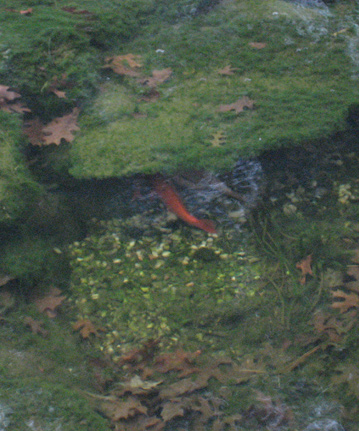Algae 101 Chapter 2

Freshwater algae are encountered in three (3) forms: unicellular, colonial and filamentous. It may be free floating (phytoplankton) or attached. All algae are important to the ecological balance of any aquatic eco-system. They are the base of the aquatic food chain; produce Oxygen through photosynthesis; and absorb Carbon which otherwise would form Carbon Dioxide. As with any living organism, the growth rate of algae is in direct proportion to the levels of required nutrients. These nutrients, for algae, are Nitrate and Phosphorus. Some algae, i.e. the attached colonial form, prefer a larger Nitrate to Phosphorus ratio. The filamentous and most of the planktonic forms prefer a larger Phosphorus to Nitrate ratio. In fact, high Phosphorus levels may actually retard the growth of many attached forms. Heavy growth of filamentous (string) algae and/or planktonic algae (pea soup) is a direct result primarily of high levels of Phosphorous in the water column. High Nitrate levels only exacerbate the problem. Maintaining the optimum levels of these nutrients through proper feeding of fish, appropriate numbers of aquatic plants, ensuring proper Oxygen levels and the control of extraneous organic matter (leaves, grass clippings etc.) is the recommended method of preventing excess algae growth. Numerous chemical products are available for controlling excess algae growth. There are also devices (UV clarifiers, Ionizers, and ultrasonic) that are presented as a means of controlling algae growth. All of these require incurring added monetary expenditure; are effective (or ineffective) to various degrees; will, to some degree, alter the balance of the eco-system (a critical consideration in life supporting water features); require additional maintenance time. Some have the potential of being extremely toxic to certain aquatic organisms. For decorative features such as fountains, water walls etc., UV clarifiers and ionizers are recommended and will provide effective ongoing control. Ionizers, in particular, though not recommended for use in aquatic habitats, are extremely effective in decorative features for not only do they control algae, but also eliminate many pathogens that cause disease such as Legionnaire’s. With proper design and stewardship, a life supporting water feature/aquatic habitat can and will contain a proper and beneficial level of algae growth without impairing the overall aesthetic appeal.

Freshwater algae are encountered in three (3) forms: unicellular, colonial and filamentous. It may be free floating (phytoplankton) or attached. All algae are important to the ecological balance of any aquatic eco-system. They are the base of the aquatic food chain; produce Oxygen through photosynthesis; and absorb Carbon which otherwise would form Carbon Dioxide. As with any living organism, the growth rate of algae is in direct proportion to the levels of required nutrients. These nutrients, for algae, are Nitrate and Phosphorus. Some algae, i.e. the attached colonial form, prefer a larger Nitrate to Phosphorus ratio. The filamentous and most of the planktonic forms prefer a larger Phosphorus to Nitrate ratio. In fact, high Phosphorus levels may actually retard the growth of many attached forms. Heavy growth of filamentous (string) algae and/or planktonic algae (pea soup) is a direct result primarily of high levels of Phosphorous in the water column. High Nitrate levels only exacerbate the problem. Maintaining the optimum levels of these nutrients through proper feeding of fish, appropriate numbers of aquatic plants, ensuring proper Oxygen levels and the control of extraneous organic matter (leaves, grass clippings etc.) is the recommended method of preventing excess algae growth. Numerous chemical products are available for controlling excess algae growth. There are also devices (UV clarifiers, Ionizers, and ultrasonic) that are presented as a means of controlling algae growth. All of these require incurring added monetary expenditure; are effective (or ineffective) to various degrees; will, to some degree, alter the balance of the eco-system (a critical consideration in life supporting water features); require additional maintenance time. Some have the potential of being extremely toxic to certain aquatic organisms. For decorative features such as fountains, water walls etc., UV clarifiers and ionizers are recommended and will provide effective ongoing control. Ionizers, in particular, though not recommended for use in aquatic habitats, are extremely effective in decorative features for not only do they control algae, but also eliminate many pathogens that cause disease such as Legionnaire’s. With proper design and stewardship, a life supporting water feature/aquatic habitat can and will contain a proper and beneficial level of algae growth without impairing the overall aesthetic appeal.




